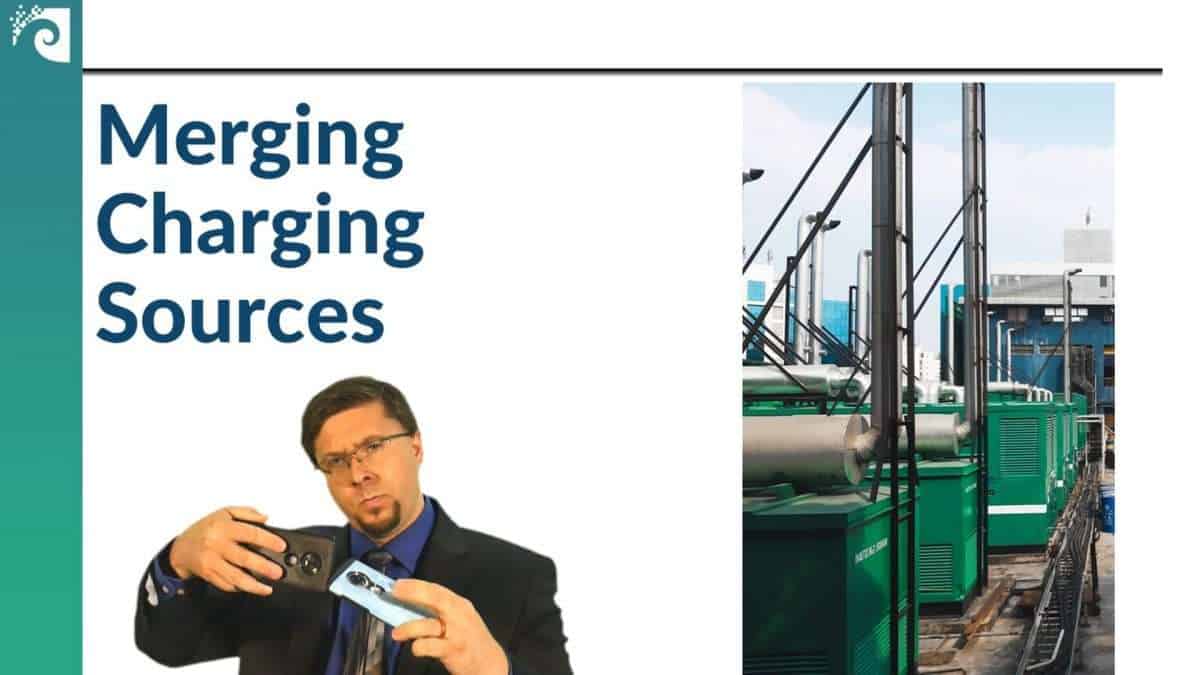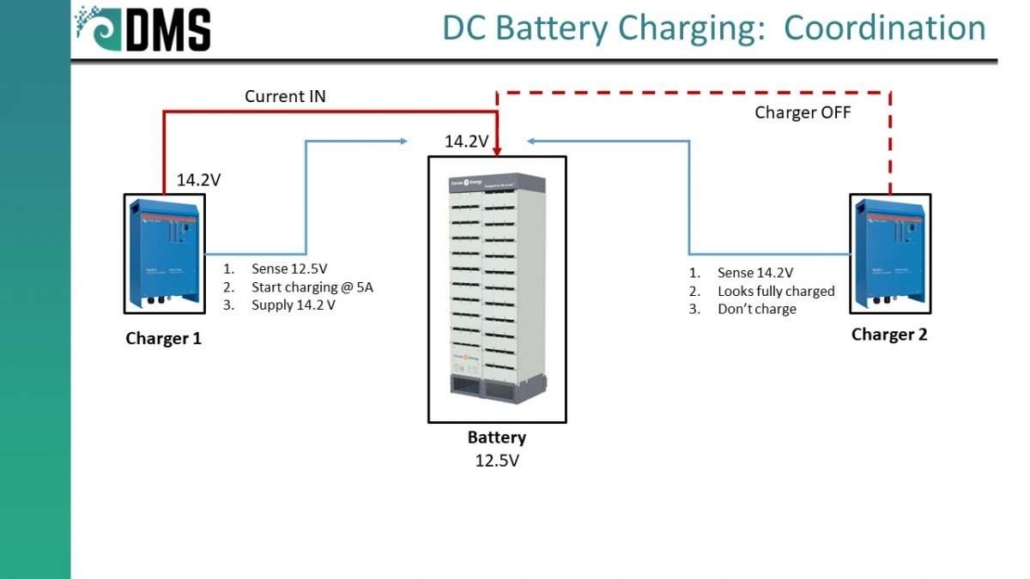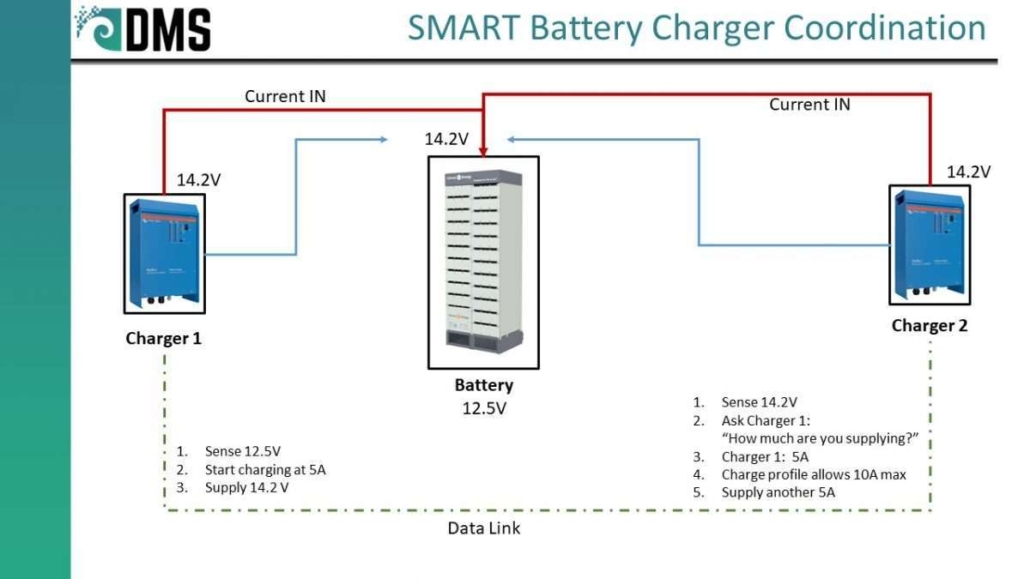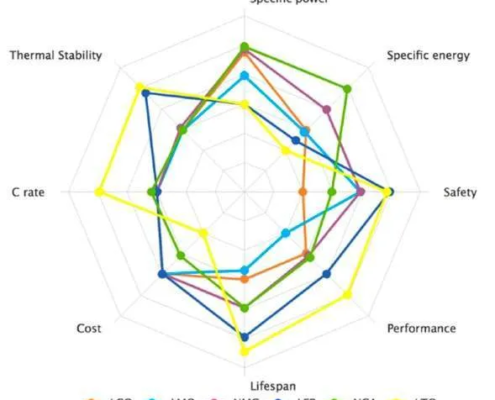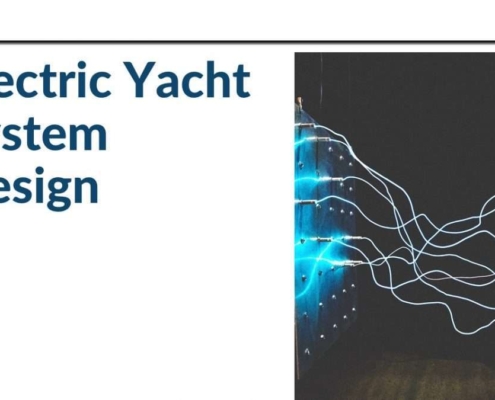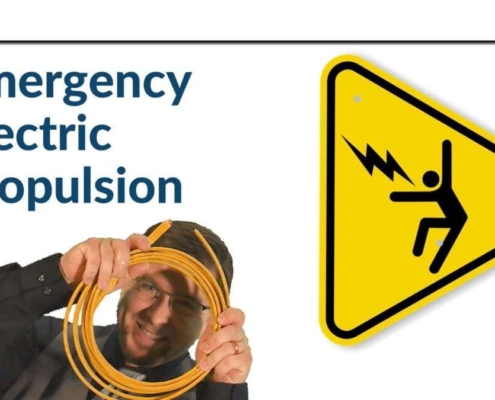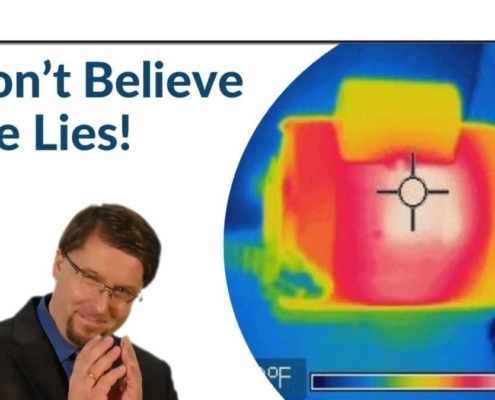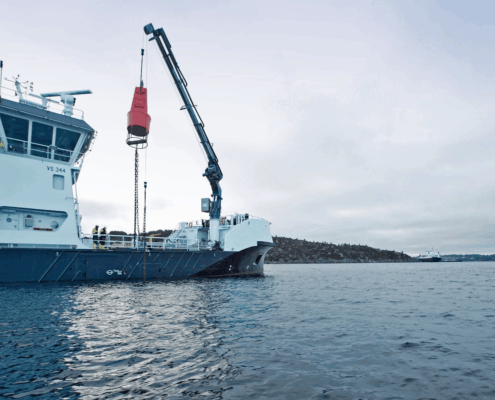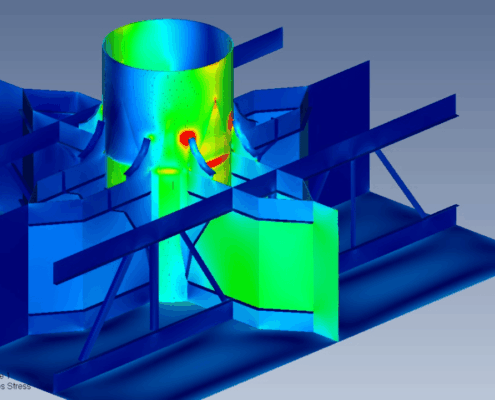When recharging the massive battery bank, go straight to the source. Direct current (DC) chargers. Many electric yachts include multiple DC sources for charging:
- Solar panels
- Engine alternator
- Methanol fuel cell
- Regeneration from propulsion motor
- Wind turbine
How to combine them? Charging on the DC circuit offers the simplest option. Generally, each source includes its own battery charger. The battery charger takes the raw output from your charging source and controls it to provide a tempered current flow to the battery. The current controls the rate of recharge for the battery, and we want to slow down that recharge as the battery gets full. Recharging heats up the battery; too much heat and we damage the battery. For some batteries, too much heat also means fire or explosion. This is why the good battery chargers are programmed with different charging profiles, depending on your battery chemistry. Smarter chargers make for healthy batteries.
Charging too fast makes batteries go boom; so, combining multiple chargers makes for a terrible idea, right? Nope. There is nothing wrong with connecting all these battery chargers to the same point, going straight into the battery. Chargers work by sensing the voltage at the battery. As the battery recharges up to full, the voltage from the battery increases slightly. A nominal 12V battery may generate 13 – 13.6V when fully charged. This is how a charger tracks the state of the battery. But it also means that to put power into the battery, the charger needs to supply that full voltage, or even slightly higher.
Now play this out with two battery chargers going to one battery. (Figure 2‑1) Charger 1 reads the battery voltage as 12.5V. It starts recharging the battery, supplying a voltage of 14.2V. The voltage now reads as 14.2V everywhere on that circuit. Charger 2 came into the game a little too late. Now it reads 14.2V, thinking that is the battery voltage. Charger 2 thinks the battery is full and turns off. This method of coordination means multiple chargers will not overload the battery. You can happily connect dozens of chargers, and only one turns on at any given time. But sometimes we want more than one charger.
Electric propulsion frequently requires smart battery chargers. To get a reasonable recharge time on those massive batteries, we generally need more current than one charger can muster. Smart battery chargers work in parallel. (Figure 2‑2) Rather than just sensing the voltage at the battery, these chargers communicate with each other directly. Normally, one the chargers becomes the master, with a charge profile that specifies current limits for each stage in the charge cycle. The master charger then coordinates with the others to ensure the combined total stays within that charge profile.
How do they coordinate? Not sure on the details. That lies beyond my knowledge, and the specific details usually depend on the manufacturer. This often ties you to one manufacturer. When coordinating with multiple smart charges, expect they all need to come from the same manufacturer. Probably even models from the same series of products. Carefully select your manufacturer, since you may buy a LOT of equipment from them.
